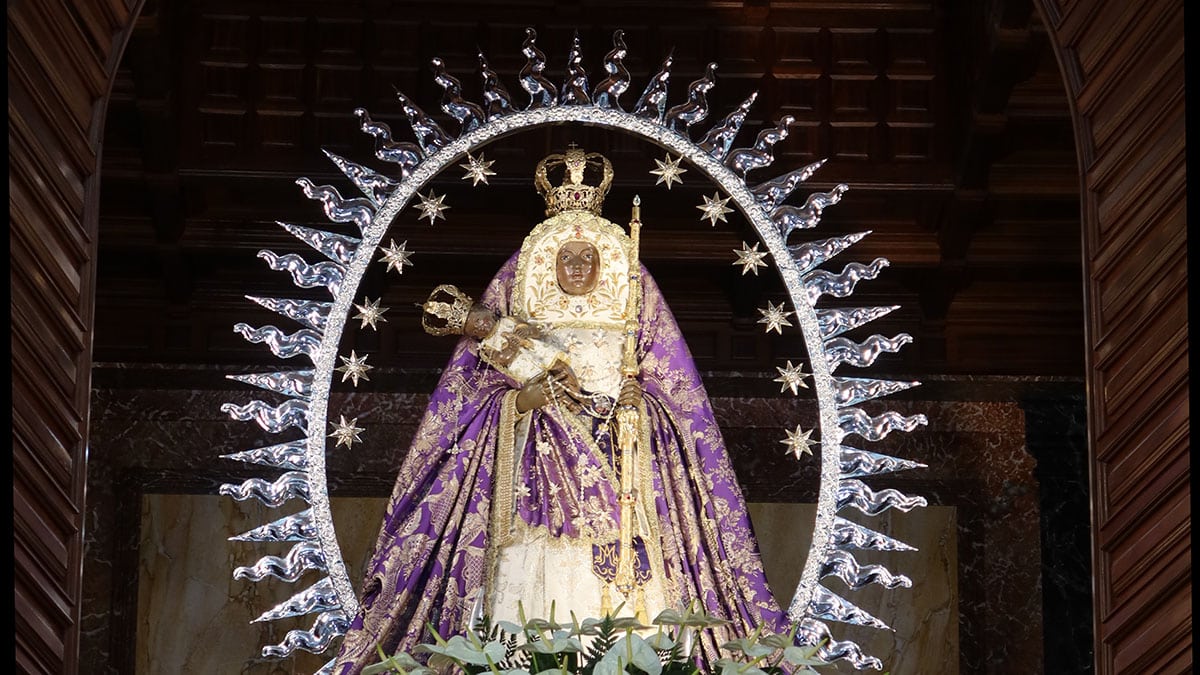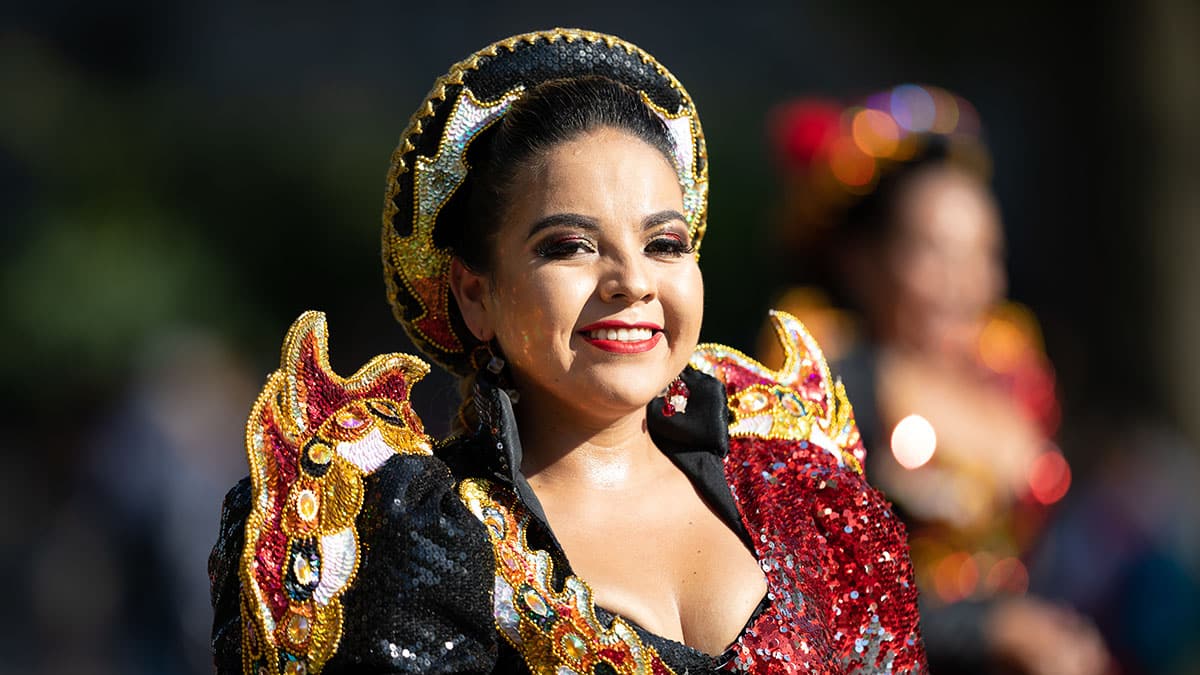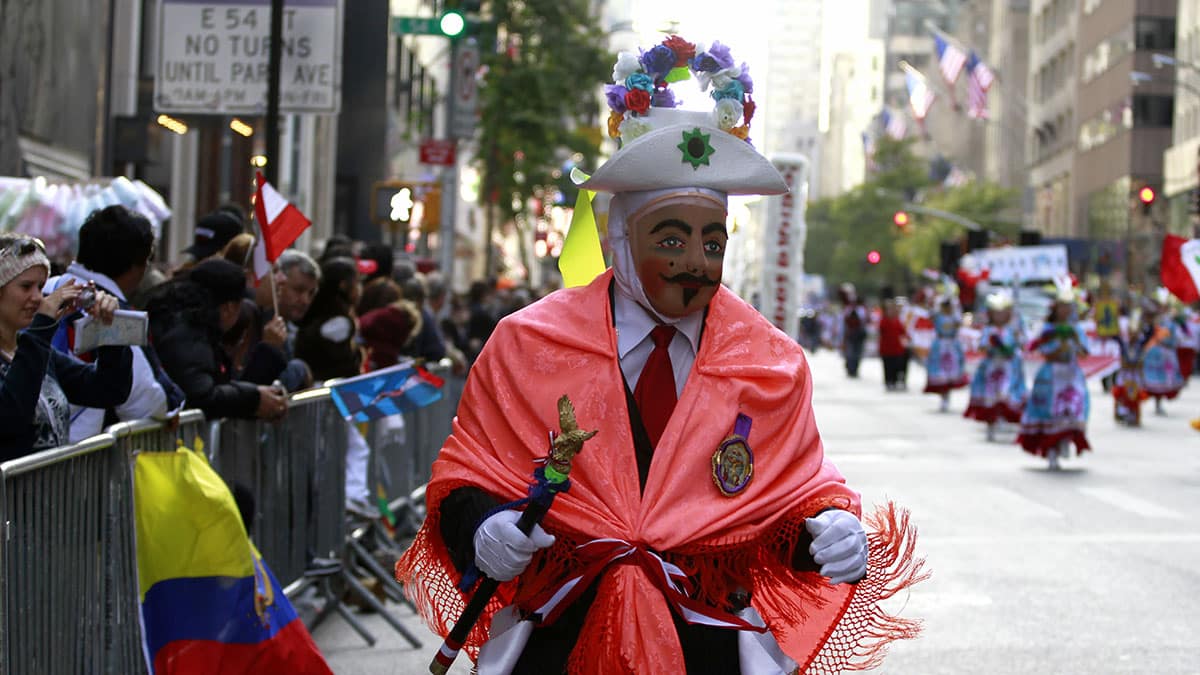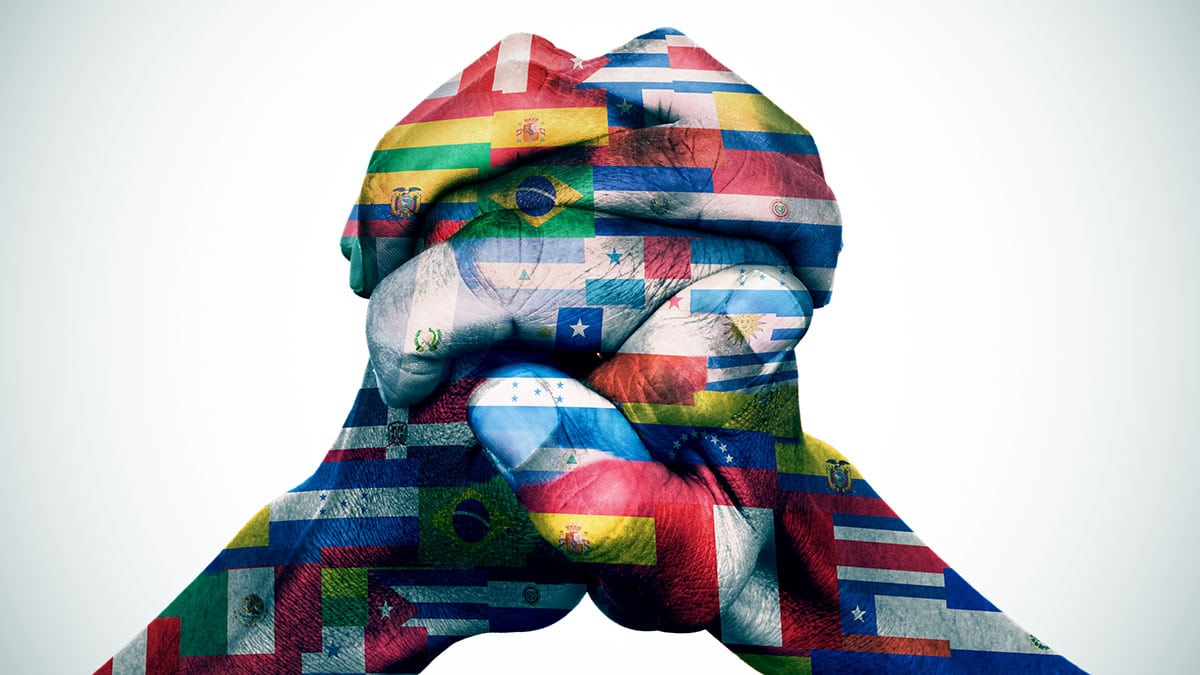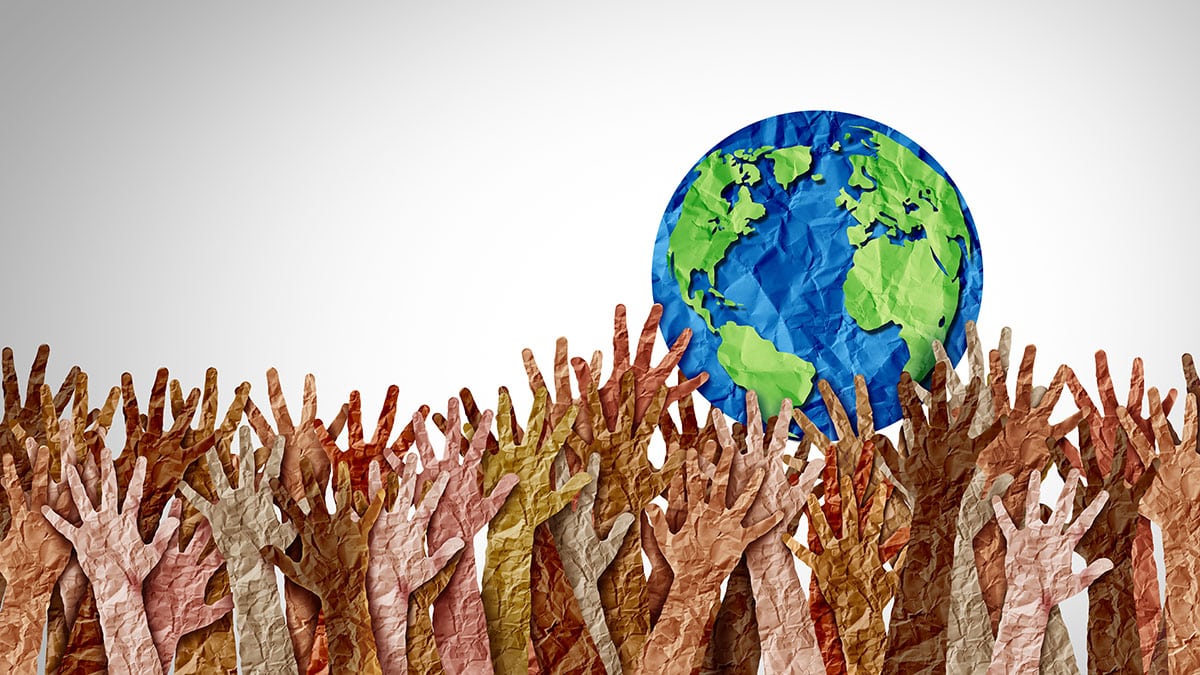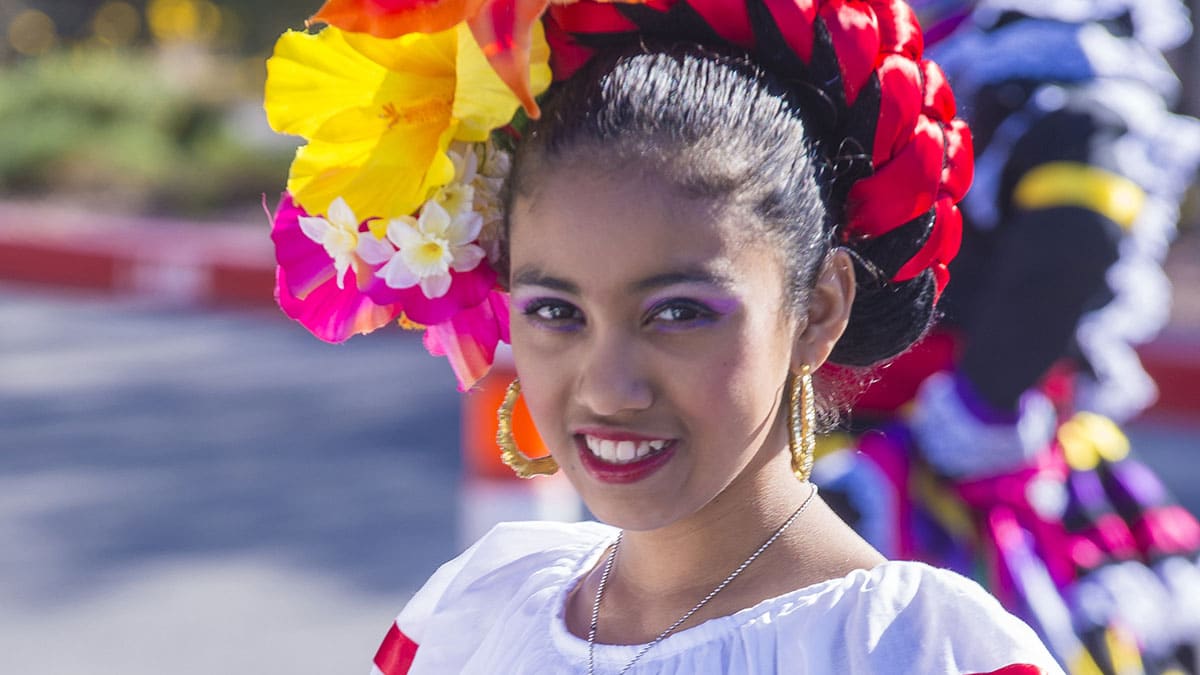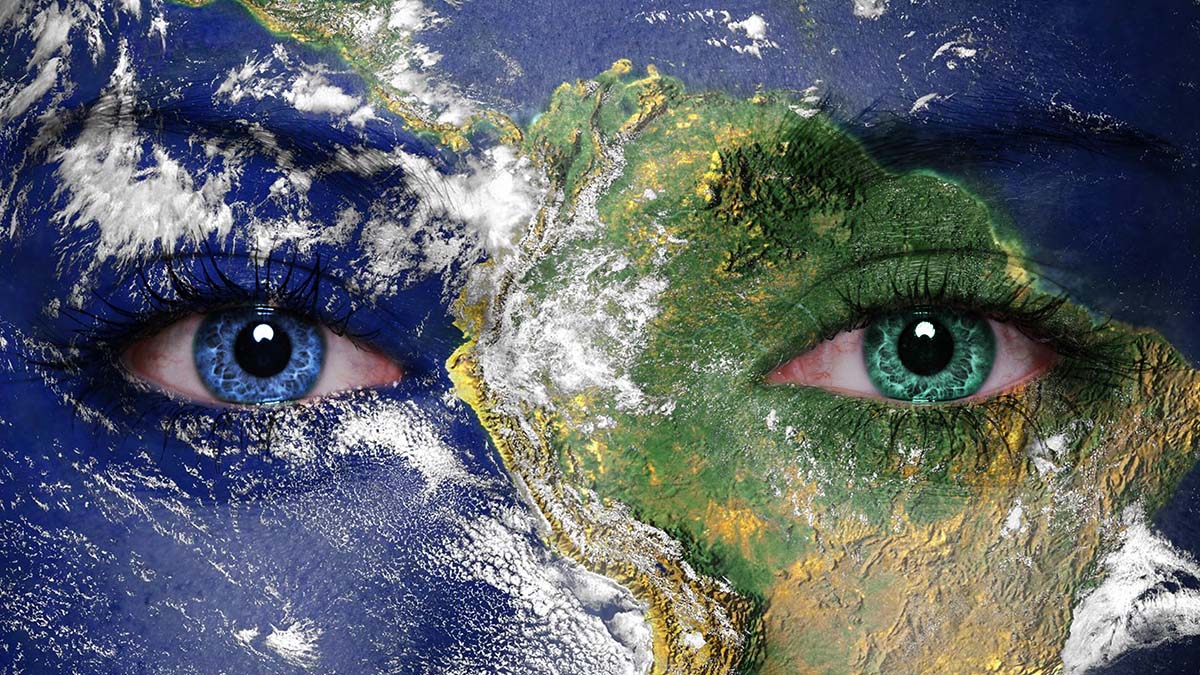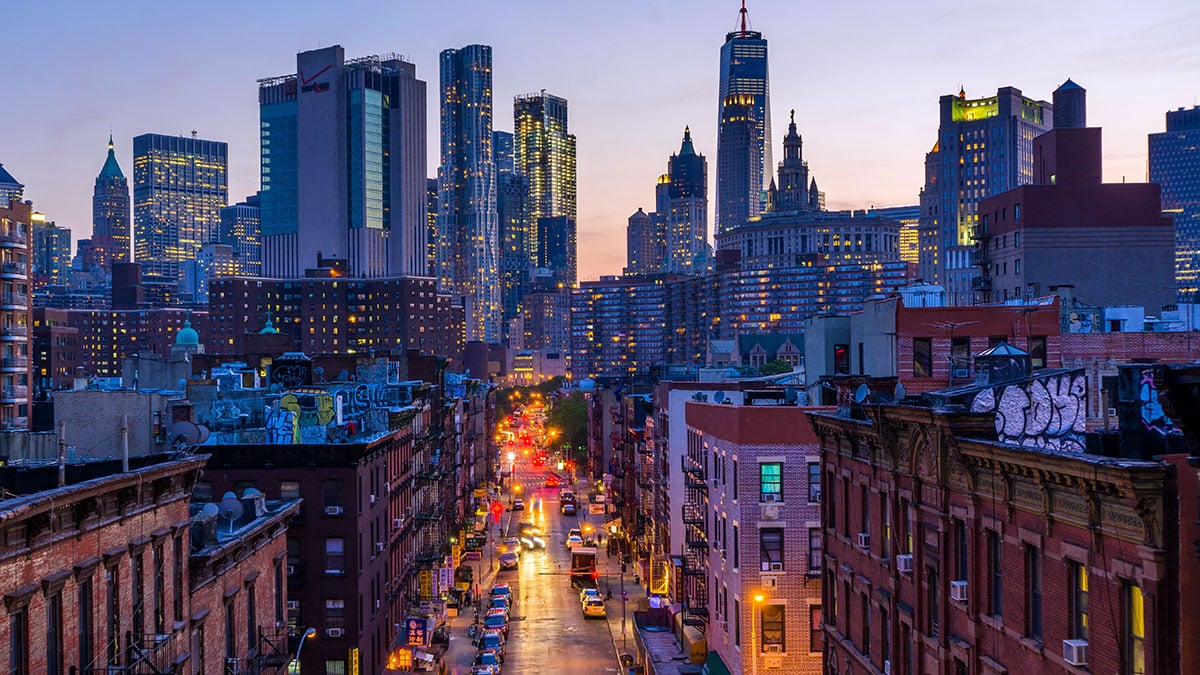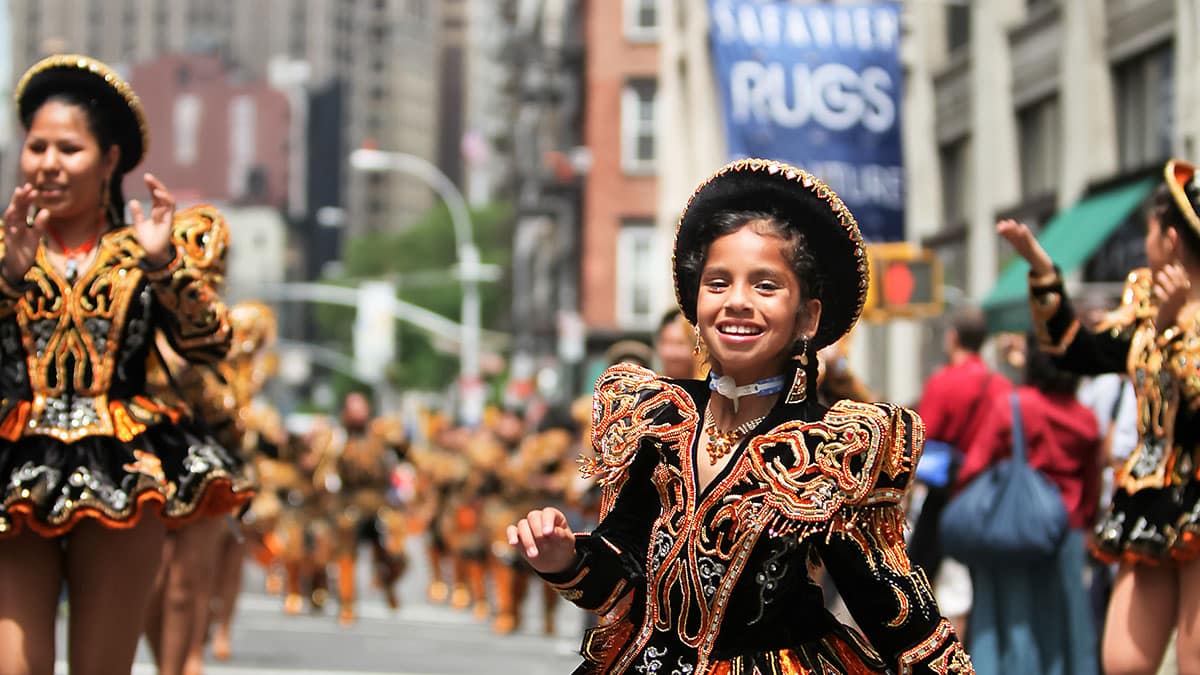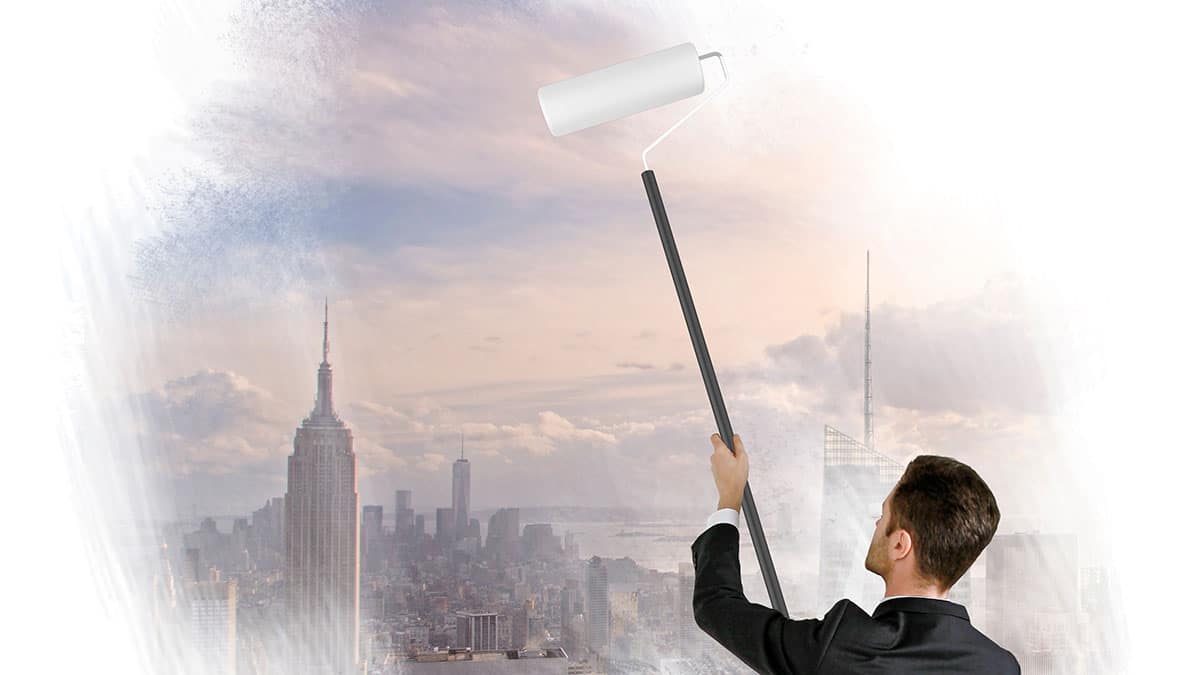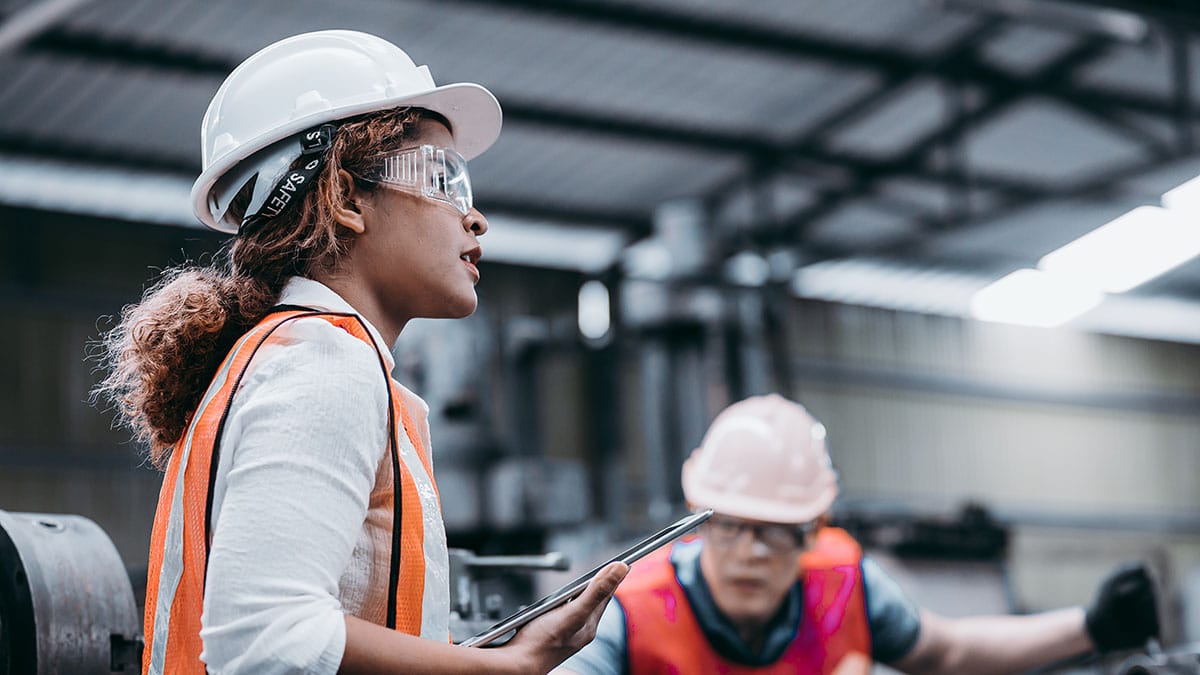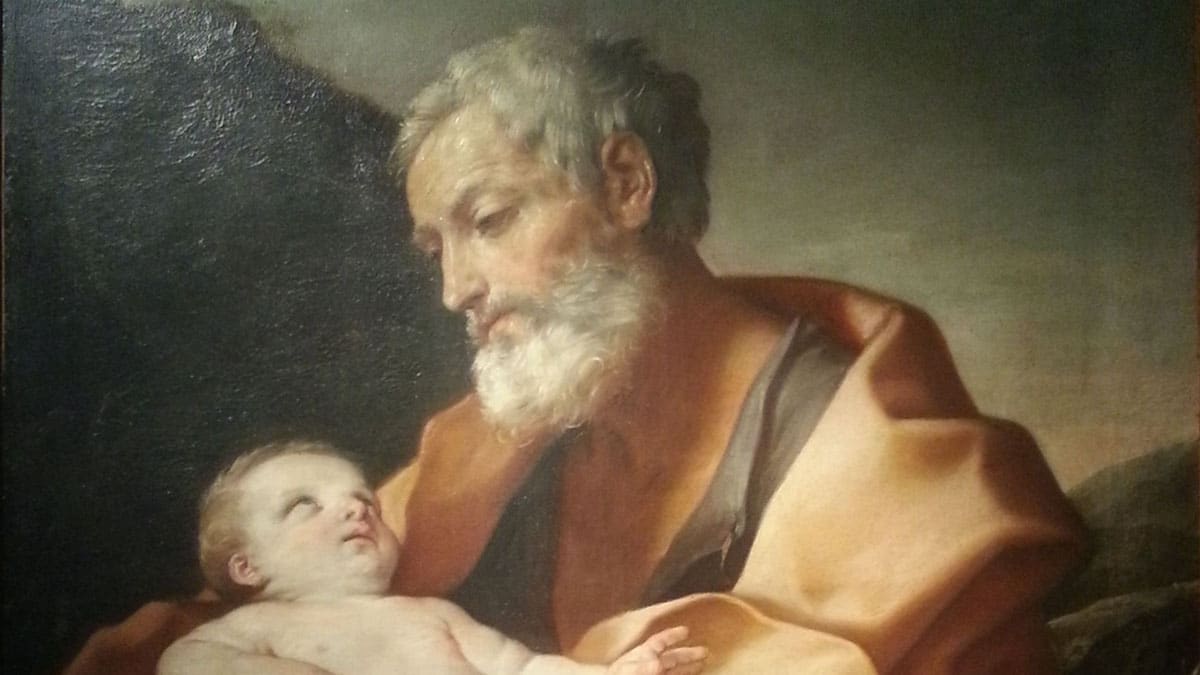Bolivian Culture in New York City is in art, dance, fashion, festivals, film, food, parades, and more. 🇧🇴
Our Lady of Candelaria is the Patron Saint of the African Diaspora; Tenerife, Canary Islands; and Miners
SANTA CRUZ DE TENERIFE, CANARY ISLANDS, Spain 🇪🇸 > 🇧🇴 🇨🇴 🇬🇹 🇵🇪 🇵🇭 🇵🇷
Bolivian Parade NYC Marches Through Jackson Heights, Queens
37TH AVENUE, Jackson Heights, Queens 🇧🇴
Hispanic Day Parade NYC Desfile de la Hispanidad New York Celebrates the Culture of 20 Hispanic Countries on Fifth Avenue
FIFTH AVENUE Midtown/Midtown East, Central Park/Upper East Side, Manhattan 🇦🇷🇧🇴🇨🇱🇨🇴🇨🇷🇨🇺🇩🇴🇪🇨🇸🇻🇬🇹🇭🇳🇲🇽🇳🇮🇵🇦🇵🇾🇵🇪🇵🇷🇪🇸🇺🇾🇻🇪
Junta Hispana is a Hispanic Product Sample Fair with Family Entertainment
FLUSHING MEADOWS CORONA PARK, Queens 🇦🇷 🇧🇴 🇨🇱 🇨🇴 🇨🇷 🇨🇺 🇩🇴 🇪🇨 🇸🇻 🇬🇹 🇭🇳 🇲🇽 🇳🇮 🇵🇦 🇵🇾 🇵🇪 🇵🇷 🇪🇸 🇺🇾 🇻🇪
Hispanic Heritage Month in New York City 2024
A meditation on what it means to be “Hispanic” in America today.
🇦🇷🇧🇴🇨🇱🇨🇴🇨🇷🇨🇺🇩🇴🇪🇨🇸🇻🇬🇶🇬🇹🇭🇳🇲🇽🇳🇮🇵🇦🇵🇾🇵🇪🇵🇷🇪🇸🇺🇾🇻🇪
Queens Hispanic Parade 2024 Desfile Hispano de Queens
37TH AVENUE, Jackson Heights, Queens 🇦🇷 🇧🇴 🇨🇱 🇨🇴 🇨🇷 🇨🇺 🇩🇴 🇪🇨 🇸🇻 🇬🇶 🇬🇹 🇭🇳 🇲🇽 🇳🇮 🇵🇦 🇵🇾 🇵🇪 🇵🇷 🇪🇸 🇺🇾 🇻🇪
Pachamama is the Andean New Year Celebration of Mother Earth
AUGUST 1 🇦🇷 🇨🇱 🇧🇴 🇪🇨 🇵🇪
Tribeca Film Festival is an Intersection of Film, Celebrity, and Popular Culture
TRIBECA 🇺🇸 🇦🇷 🇧🇴 🇨🇱 🇨🇴 🇯🇲 🇮🇹 🇲🇽 🇳🇬 🇵🇷 🇸🇴 🇺🇾
Dance Parade 2024 Gets 10,000 New Yorkers Dancing in the Street
SIXTH AVE, 8TH ST, TOMPKINS SQUARE PARK, Chelsea, Greenwich Village, East Village, Manhattan
🇺🇸 🇲🇽, 🇨🇺 🇩🇴 🇭🇹 🇯🇲 🇵🇷 🇹🇹, 🇧🇴 🇧🇷 🇨🇴 🇵🇪. 🇨🇩 🇨🇬 🇪🇬, 🏴 🇪🇸, 🇰🇭 🇨🇳 🇭🇰 🇮🇳 🇯🇵 🇰🇷 🇲🇴 🇹🇼 🇸🇬 🇹🇭
Independent New York “15×15: Independent 2010-2024” Looks Back Over 15 Years
SPRING STUDIOS, Tribeca, Manhattan 🇺🇸 🇧🇴 🇧🇷 🇯🇲 🇰🇪 🇲🇽 🇳🇬 🇸🇴
International Workers Day or Labor Day is a National Holiday in Much of the Latin World
MAY 1 🇦🇷 🇧🇴 🇧🇷 🇨🇱 🇨🇴 🇨🇷 🇨🇺 🇩🇴 🇪🇨 🇸🇻 🇵🇭 🇫🇷 🇬🇹 🇭🇹 🇭🇳 🇮🇹 🇲🇽 🇵🇦 🇵🇾 🇵🇪 🇵🇹 🇷🇴 🇪🇸 🇺🇾 🇻🇪
Feast of Saint Joseph Celebrates the Husband of Mary, and is Latin Father’s and Stepfather’s Day
MARCH 19 🇧🇴 🇭🇳 🇮🇹 🇲🇿 🇵🇹 🇪🇸
New York Bolivian News
Bolivian New York City
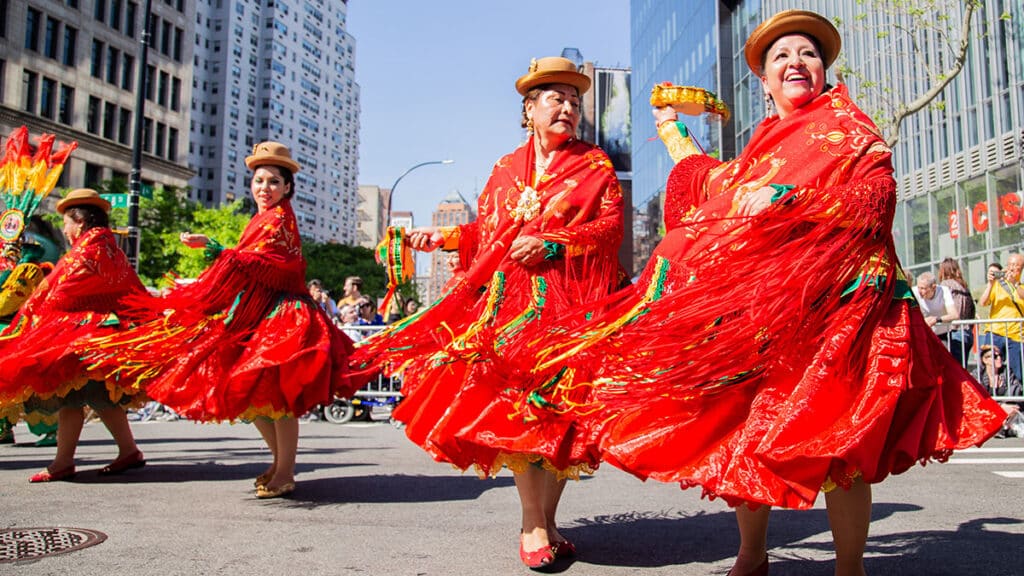
Bolivian New York City is centered in Queens and in Paterson, New Jersey.
Bolivian Dance in NYC
- Many Bolivian caporales dance groups join the Dance Parade.
Bolivian Fashion in NYC
- Fashion Designers of Latin America (FDLA) usually shows some Bolivian designers during New York Fashion Week.
Bolivian Festivals in NYC
- The Bolivian Day Parade is New York City’s big Bolivian festival.
Bolivian Film in NYC
- The New York Film Festival at Film at Lincoln Center often shows some Bolivian films.
Bolivian Food in NYC
Puerta Del Sol in Woodside, Queens serves traditional Bolivian food.
You can get salteñas (Bolivian meat pastries) at Bolivian Llama Party in Sunnyside, Queens. blp.nyc
Bolivian Government in NYC
- New York City’s Bolivian Consulate is in Manhattan’s Garment District. cancilleria.gob.bo
Bolivian Parades in NYC
- The Queens Bolivian Parade is NYC’s big Bolivian festival. There is Bolivian culture at the Dance Parade, Hispanic Day Parade and Junta Hispana street fair.
Bolivian Culture
Bolivian culture is mostly Indigenous with colonial Spanish and African influences, plus Japanese, and Lebanese influences
- Bombín hat
- Caporales dance
- Diablada dance
- Mestizo Baroque art
- Morenada dance
- Saltenas empanadas
- Tinku dance
- Zampona flute
Bolivian Dance
Bolivia’s Indigenous culture remains very strong. Bolivian culture is a rich blend of Indigenous, Spanish colonial and African cultures.
Bolivia has many interesting folk dances including Caporales, Diablada, Morenada, Tinku and Tobas.
Bolivia

Bolivia has Andes and Amazon regions. It was part of the Inca Empire. Spanish colonizers stole the entire silver mountain at Potosí. Bolivians speak Spanish, Quechua, Aymara and other Indigenous languages. Indigenous culture remains strong. Indigenous colonial Mestizo Baroque art is quite beautiful. There is some blending of Indigenous and African Diaspora traditions. Carnival is important.
Bolivian People
The Bolivian people are mostly Indigenous, with a Spanish colonial overlay, Afro-Bolivians, and Japanese and Lebanese communities.
The Bolivian constitution recognizes 36 official languages.
Aymara and Quechua are the largest Indigenous communities.
Bolivian Intangible Cultural Heritage
UNESCO recognizes these Bolivian contributions to the Intangible Cultural Heritage of Humanity:
- Alasita ritual journeys
- Carnaval de Oruro is one of South America’s biggest cultural festivals.
- Ichapekene Piesta
- Kallawaya
- Pujllay and Ayarichi music and dance of the Yampara culture.
- Santísima Trinidad del Señor Jesús del Gran Poder in La Paz.
The Carnaval de Oruro is one of South America’s great cultural festivals. It was originally an Indigenous festival that was syncretized with the Virgin of Candelaria to preserve Indigenous traditions in the Colonial Era. It’s now a pre-Lenten carnival.
Public Holidays in Bolivia
- New Year’s Day on January 1.
- Carnival (varies)
- Good Friday (varies)
- Labor Day on May 1.
- Corpus Christi on June 16.
- Bolivian Independence Day on August 6.
- All Saint’s Day on November 1.
- Christmas Day on December 25.
Festivals in Bolivia
- Alasita, a Bolivian good-luck tradition, is in La Paz for two-three weeks from January 24.
- Feast of Our Lady of Candelaria, patron saint of Tenerife, Canary Islands, and the African Diaspora is February 2.
- Carnaval de Oruro is a pre-Lenten carnival.
- Holy Week varies.
- Nuestro Señor del Gran Poder Christian festival (May or June) is in La Paz in June.
- Aymara New Year is in Tiwanaku, near La Paz, on June 21.
- Inti Raymi is June 22.
- Entrada Universitaria is a college folk parade in La Paz in July or August.
- Pachamama Andean New Year celebrates Mother Earth on August 1.
- Ñatita is an ancestral veneration festival in La Paz on November 8.
Bolivian World Heritage Sites
UNESCO recognizes these world heritage sites in Bolivia:
- Chiquitos in Santa Cruz Department has restored colonial Jesuit missions.
- Fuerte de Samaipata in Florida Province of Santa Cruz Department is a town with ceremonial Indigenous rock sculptures.
- Noel Kempff Mercado National Park in Santa Cruz Department has beautiful waterfalls.
- Potosí in Potosí Department, is the city of Cerro Rico, the legendary silver mountain of the Spanish colonial era.
- Qhapaq Ñan is the ancient Inca road system that follows the Andes. The mountain road that passes through Bolivia, runs from Colombia to Mendoza, Argentina
- Sucre in Oropeza Province of Chuquisaca Department, is a town known for its fusion of Indigenous and Colonial architecture.
- Tiahuanacu in Ingavi Province of La Paz Department is an ancient center of Tiahuanacu culture.

